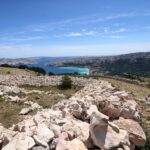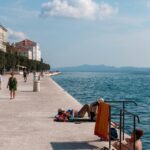As Poslovni Dnevnik/Mirjana Samardzic Novoselec writes, back at the end of last year, the European Union charted its already well-known path – the conversion of environmental challenges into a unique opportunity for a fair and inclusive energy transition. With its ambitious goals by 2050, the European Green Plan is an instrument for creating the first climate-neutral continent, the so-called Green Europe.
The framework plan for measures to exploit natural resources by moving to a clean circular economy, halting climate change, restoring biodiversity and reducing pollution has been quantified by the necessary investments and sources of funding. All economic sectors have been covered, especially transport, energy, agriculture, maintenance and construction of buildings, but also industries such as steel, cement, textiles and chemicals, and information and communication technologies.
With the new Multiannual Financial Framework for 2021-2027, a new generation Europe supplement, the EU is doubling its current budget in two ways: through the Recovery and Resilience Mechanism and the European Union’s Regional Policy Funds. On the one hand, the Recovery and Resilience Mechanism is based on tackling the climate and environmental crisis as an opportunity for green economy development and the digital transition as a guarantee of social and economic resilience, and on the other hand, under the cohesion investment policy for 2021-2027, the EU will focus on five main objectives – promoting innovative and smart economic transformation, a greener, low-carbon Europe, strengthening ICT mobility and regional connectivity, implementing the European Pillar of Social Rights and strengthening sustainable and integrated development in urban, rural and coastal areas.
Projects in the field of energy, environment and climate change adaptation will stimulate a number of segments, most of which focus on energy efficiency and renewable energy sources, the circular economy and green infrastructure, and the synergy of digitalisation and energy transition for smart and sustainable cities and villages. The European Investment Bank (EIB) has published a Climate Bank Investment Plan for 2021-2025 and the EIB financing of 1 trillion euros by 2030 gives a strong stamp to the European Green Plan and offers assistance in creating a European climate-neutral continent.
The plan also describes the need to channel funds to regions whose economies are still dependent on energy-intensive industries, such as coal mines or steel production. They believe that such regions will have the hardest time adapting to the new green economy, and they want to achieve a fair transition. To make this possible, in addition to social equality, the segment of investing in resources, education, job creation for people whose livelihoods are threatened by the transition to a low-carbon economy and the effects of climate change was highlighted. According to the recently presented National Development Strategy, by 2030, Croatia is seen as a competitive, innovative and secure country with a recognisable identity and culture, a country of preserved resources, quality living conditions and equal opportunities for all.
On the other hand, in the new period of 2021-2027, we can expect twice as much funding and a strong emphasis on the topics of innovation development, digitalisation and the green economy. Thus, Croatia will have 24 billion euros at its disposal in the period 2021-2027, as opposed to the 10.7 billion euros available in the period 2014-2020. Croatia also has the adoption of the National Recovery and Resilience Plan as a key document for obtaining support from the Recovery and Resilience Mechanism before it. Integrating measures from the European Green Plan into the National Recovery and Resilience Plan would stimulate economic activity, innovation and development.
Unfortunately, it is not that simple in the case of Croatia, which is quite significantly lagging behind in terms of the Green Energy Transition. There is already an obvious delay in the adoption and implementation of policies, the inconsistency of various development documents, but also insufficiently clear answers on how to achieve these and other quite ambitious goals. These challenges raise a clear question: Will the Croatian Government succeed in expressing its will to accept the goals of climate neutrality by 2050 and embrace a truly Green Croatia?
The importance of preparing well and actually doing so on time was also pointed out by the director of the European Investment Bank for the Adriatic region, Miguel Morgado, speaking at the European Recovery Plan conference in November 2020. He pointed out that for 70 percent of the funds that will be available, Croatia must commit by 2022 in order to reach them in time to withdraw. On the other hand, implementation requires expertise, political will and significant investments, including public and private ones.
Aside from the adoption of various strategies, which are ultimately just a wish list, Croatia seems to have a very low level of ambition for decarbonisation, institutional capacity to coordinate various policies is limited, and investments are not detailed. From all the above, the integration of measures into the National Recovery and Resilience Plan is a major challenge, and it remains to be seen how its implementation in terms of Croatia and the Green Energy Transition process will proceed. For the time being, Croatia isn’t doing much more than merely showing a desire for the Green Energy tTansition, but without clearly defined investment priorities and available secured funds, existing strategic projects still don’t really have enough of a connection with the Green Energy Transition.
Despite all the challenges lying before Croatia, it is clear that the country is now being given the opportunity to launch a green wave of investment. It must be carried out by clean energy production with special emphasis on photovoltaic technology, geothermal energy and hydrogen, the deep energy renovation of buildings to increase energy efficiency and the digitalisation process for the development of smart energy systems, networks and energy storage, as well as the concept of smart cities and villages.
For the latest travel info, bookmark our main travel info article, which is updated daily.
Read the Croatian Travel Update in your language – now available in 24 languages.
Join the Total Croatia Travel INFO Viber community.










